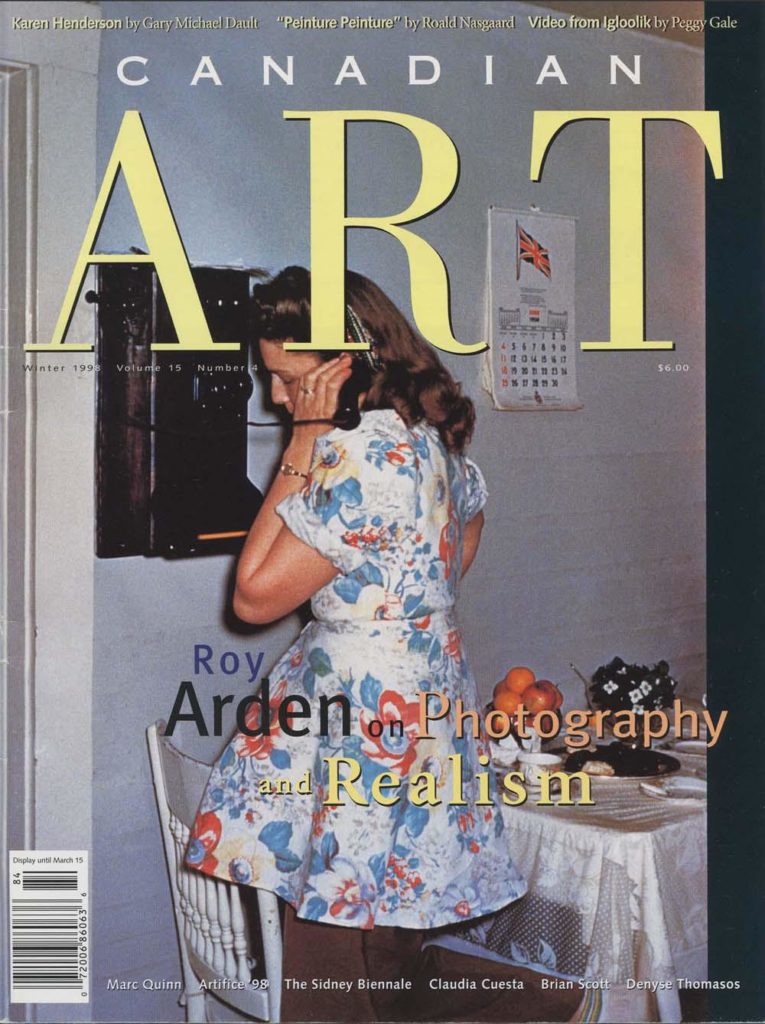Kennedy Bradshaw was a mechanic from Cornwall, England. He moved to Keno City, a silver-mining community in the Yukon, in 1952. Bradshaw was also an amateur photographer who conscientiously depicted the everyday life of his small isolated community. When he died in 1981 he left several hundred 35-mm Kodachrome slides and a few black and white negatives. Recently, curator Robin Armour edited these slides and had sixty images printed for the exhibition at Presentation House Gallery in North Vancouver. While many of the pictures could be dismissed as well-made snapshots, there are many more that demand the respect we usually reserve for artworks. The very fact that the exhibition was presented in an art gallery instead of a historical museum promoted a reception of the photos as aesthetic rather than documentary objects.
The recontextualization appears justified—for while Bradshaw described himself as a hobbyist, his photographs eschew the ritualistic motive of family photos. Bradshaw’s interests were often closer to an anthropologist’s; he took care to include important environmental information in his portraits and often focused on the place itself, in all of its quotidian particularity. This literary purpose was also combined with a formal awareness, which reveals Bradshaw’s artistic intentions. Although his achievement can’t be placed on the same qualitative level as the work of Eugene Atget, it can be placed categorically beside it. Neither photographer promoted their work as art—yet the artworld has claimed them. The re-categorization is not a horizontal process but a vertical one. Art crowns the hierarchy of photography’s possible applications.
So begins our Winter 1998 cover story. To keep reading, view a PDF of the entire article.









